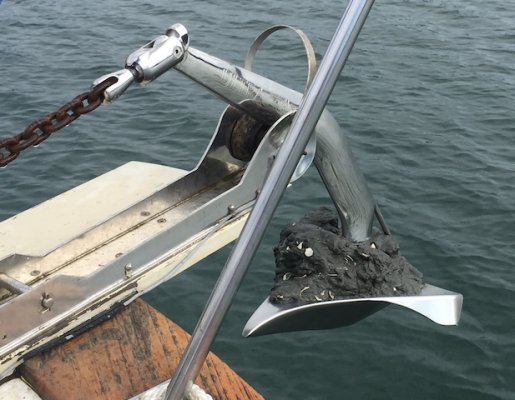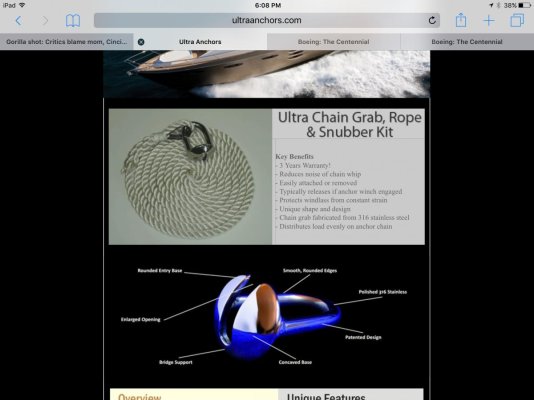hollywood8118
Guru
- Joined
- Nov 16, 2009
- Messages
- 2,379
- Location
- USA
- Vessel Name
- " OTTER "
- Vessel Make
- Ocean Alexander Europa 40
Thanks for sharing that
Can I ask a question though? Why didn't you deploy the bridle legs through the hawse holes?
To my (bottom of the learning curve) mind it reduced the amount of available stretch in the legs by introducing hard edges over which they had to go over, as well as generated heat (even through the chafe guards) in a defined spot which would reduce the bridles strength over time.
We rode out a similar wind for the first time last weekend bouncing around on a nylon rode, so your set up is definitely better than ours.
not to mention wearing down the cap rail..
HOLLYWOOD


 Saved my bacon yesterday (and my boat).
Saved my bacon yesterday (and my boat). 
